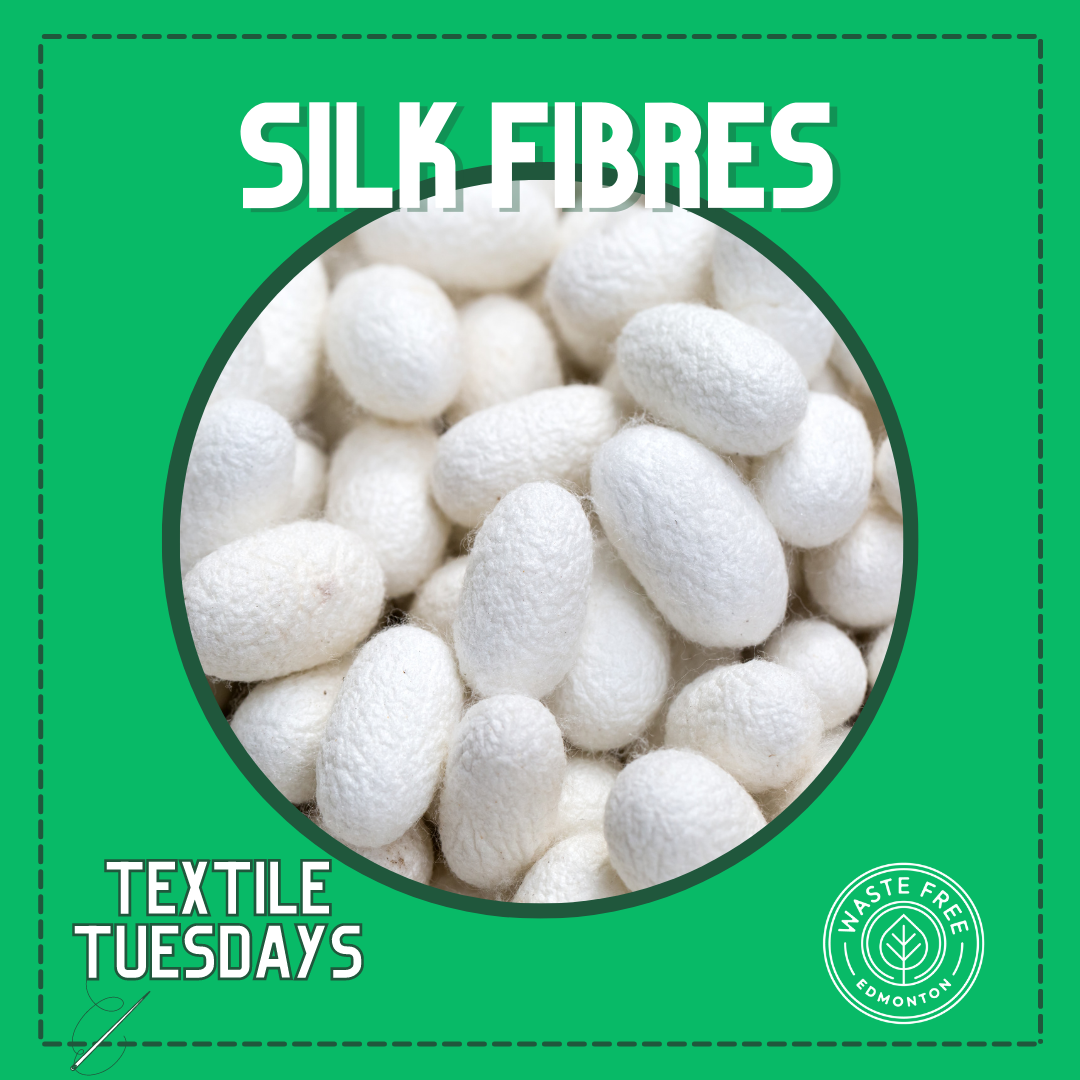Background
It’s time to talk about silk! Silk is a luxurious fibre mainly produced in China and India, and represents a tiny fraction of the world fibre market. Silk is a protein fibre made by caterpillars via modified salivary glands – so we guess you could call it worm spit! The fibre is triangular, and is made of a protein called fibroin. It also has an outer “coating” called sericin which acts like a glue to hold the cocoon together.
The vast majority of silk comes from one species of moth, Bombyx mori, which has been bred over thousands of years. Silk is the only naturally occurring filament fibre, where one cocoon can contain fibres up to 1 km long! In order to collect this silk, the insect is euthanized before the adult is able to emerge from the cocoon and break the fibres. The cocoons are then reeled (unwound) and combined with the filaments of other cocoons to create a yarn.
Wild or Tussah silk comes from numerous other species of moth, and is normally harvested after the adult leaves the cocoon. This results in a slubby, more textured fabric.
Pros:
- Shiny and lustrous thanks to its shape
- Cool feeling against the skin
- Stronger than other protein fibres and biocompatible, which makes it popular for medical textiles
Cons:
- Delicate, difficult to launder properly (can be damaged by detergents)
- Very expensive
- Having to kill the insect to reel the cocoon properly. It can take 3000 silkworms to make 1 kg of finished material.
Innovations
Silk is a small percentage of the global fibre market and at present isn’t a significant source of textile waste. BUT. Some really neat developments are happening in the world of silk that we’d love to share with you!
Why is silk important? As mentioned it’s a popular research material for medical textiles such as tissue scaffolds, sutures, and films/patches for drug delivery [3], due to its biodegradability and compatibility with the human body. It also represents a promising future where high performance fibres can be manufactured with biological materials, allowing us to decouple fibre production and petrochemicals.
The use of synthetic biology to produce artificial silk fibres has been a popular research topic since the 90s, but has really taken off in the last decade. The two main silks being produced are that of Bombyx mori, the species we mentioned last week, and spider silk. Spider silk is especially popular due to its amazing mechanical properties, particularly its toughness (strength and stretch). Many companies have been founded to produce these fibres at scale, including Spiber Inc., Bolt Threads, and Kraig Biocraft Laboratories to name a few, and they have been collaborating with brands such as The North Face and Stella McCartney on special projects [4, 5].
The method of manufacture in these cases often involves genetic manipulation, especially where spider silk is involved, as rearing spiders for large-scale production is not feasible (they don’t produce large amounts of silk and tend to eat each other). Techniques may involve inserting spider silk genes into silkworms and collecting the silk conventionally, or using recombinant DNA and bacteria or yeast to produce silk proteins [3, 6].
Are you convinced yet that silk is one of the more interesting fibres out there? If not, let us know!
References:
- Kadolph, S.J. (2011). Textiles. Upper Saddle River, NJ: Prentice Hall.
- Fritz, Anne and Cant, Jennifer (1986). Consumer Textiles. Oxford University Press Australia
- Holland, C., Numata, K., Rnjak-Kovacina, J., & Seib, F. P. (2019). The biomedical use of silk: past, present, future. Advanced healthcare materials, 8(1), 1800465. https://doi.org/10.1002/adhm.201800465
- https://spiber.inc/en/tnfsp/mp/
- https://boltthreads.com/2017/07/20/stella-mccartney-and-bolt-threads-announce-a-new-partnership-focused-on-sustainable-fashion-and-luxury-materials-development/
- Poddar, H., Breitling, R., & Takano, E. (2020). Towards engineering and production of artificial spider silk using tools of synthetic biology. Engineering Biology, 4(1), 1-6. https://doi.org/10.1049/enb.2019.0017


